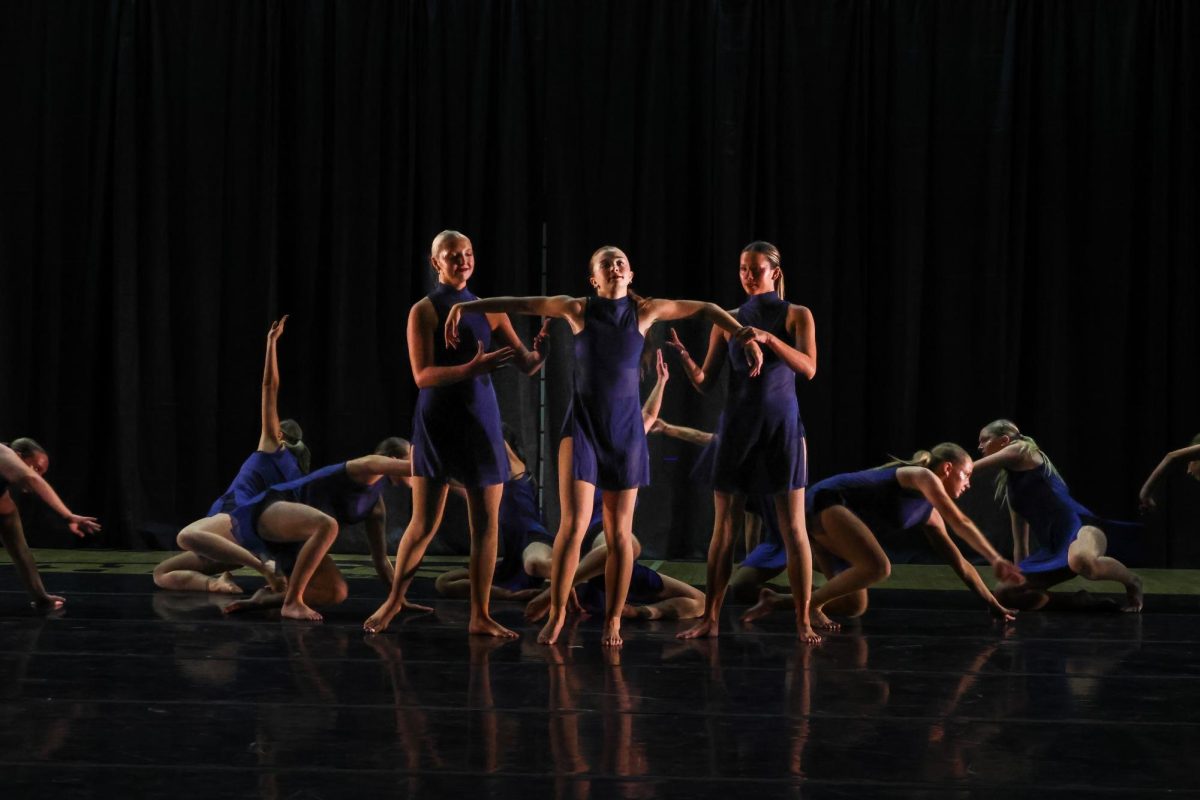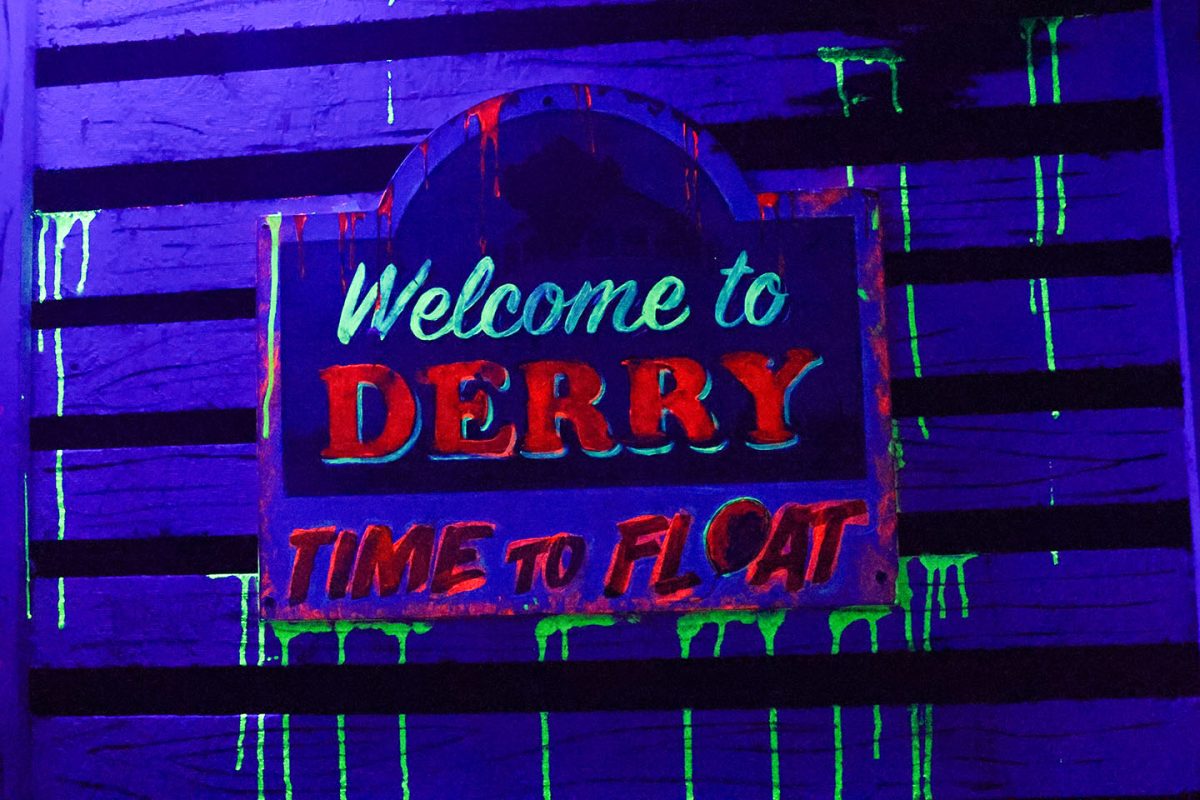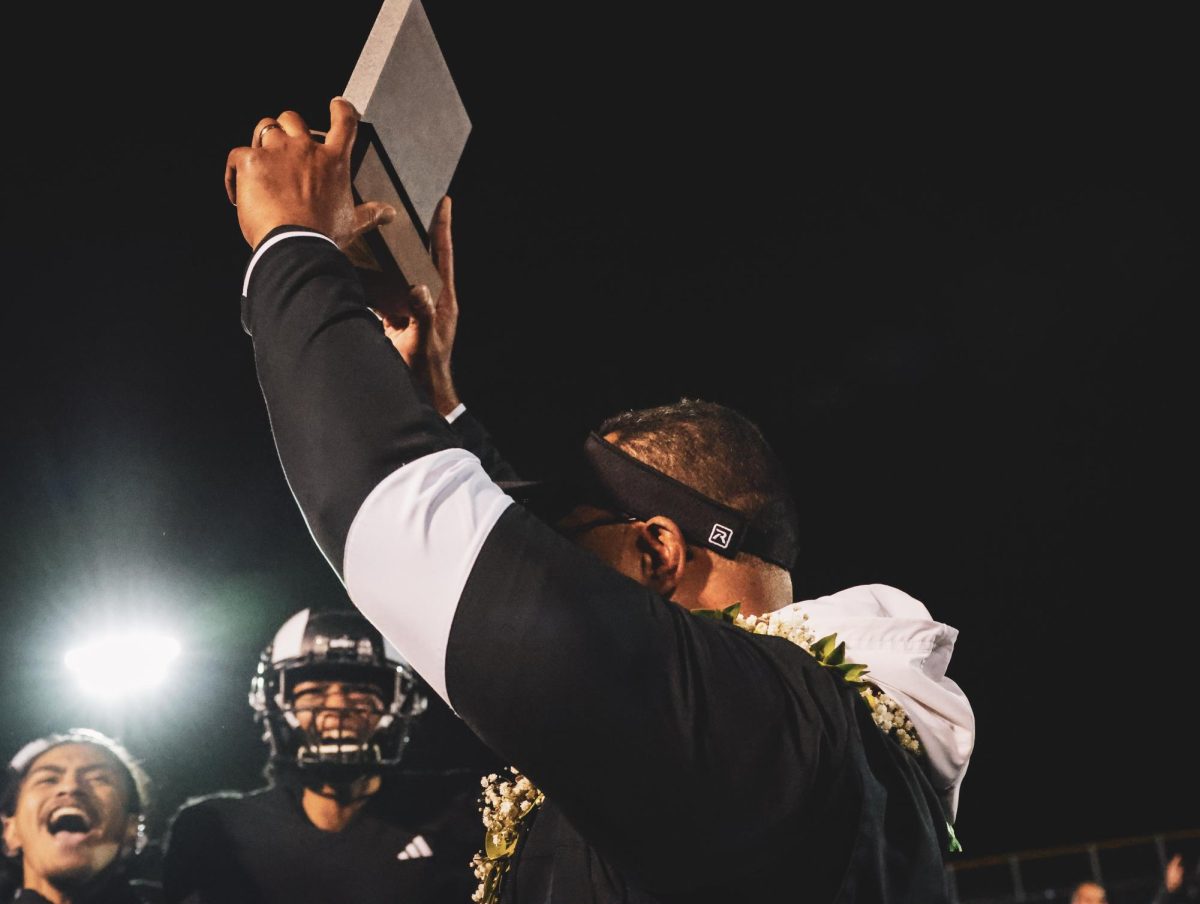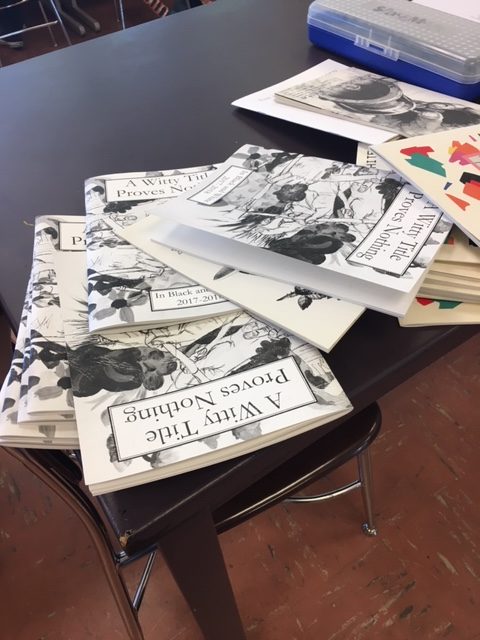A Witty Headline Proves Nothing
The Highland annual literary magazine provides a creative outlet for student writers.
The literary magazines of years past inspire the future during an editing session.
March 18, 2019
It’s Saturday morning at Highland High, and while the building lays dark and dormant, the sounds of indie rock, clicking mouses, and lots of bad puns float from the 2nd hall E floor computer lab.
These are the editors of the Highland literary magazine, In Black and White, gathered from 9 to 2 to attempt to do the impossible: Assemble a vast amount of writing and artwork into comprehensible, aesthetically pleasing pages, and choose a snappy title to boot.
The task is rather daunting.
It begins not in these five hours but in the days and weeks leading up to the editing process. Pieces are submitted through English classes or Creative Writing classes to teachers, from which they are vetted by editors, then typed up and proofed by students in the beginning-level Creative Writing classes, who are tasked with making sure that the pieces are typed appropriately as was intended by the authors.
Only after all this is done can editing begin on the magazine itself.
The process entails the copious use of Adobe InDesign, a program also used for the school paper that carries with it a surprising variety of quirks such as the inability for the same file to be open in two different locations and, due to the massive amounts of processing it requires, nonsensical glitching and shutting down; which, around 12:45, prompted Head Coeditor Trevyn Porter to swear and throw his hands up in frustration after — temporarily — losing 30 pages of work.
For all the trouble that it causes, however, one thing stands out: The passion of the students who make it, and the passion of the writers and artists whose work is submitted for publication. Publication, after all, is what the literary magazine is all about. Especially creative work and creative writing, which aren’t typically examined in the classroom setting.
“I don’t think we spend a lot of time on it in our regular English classes,” Says Highland teacher Kevin Smith, who teaches both the beginning and advanced Creative Writing classes at Highland, and who heads the literary magazine.
Smith is also the main staff effort behind the literary magazine, a tradition which dates back to 1956, and which persists to this day despite the early doubts of many.
“When I first took this position of advanced creative writing teacher, everybody was telling me, ‘oh just do away with the literary magazine, it’s too much of a pain in the neck.’” Says Smith, “I kind of got thinking about it and a few days later I said ‘absolutely not’.”
Celebrating the work of Highland students is a vital role that the literary magazine plays in the community, and one that Smith believed the school shouldn’t part with.
To avoid budgeting concerns, he went with the cost-effective and spirit-showing decision of making a full black and white magazine, spiced up by neat layout, high-quality pieces, and clever cover wordplay — Last year’s edition, A Witty Title Proves Nothing, serves as a good example.
“I think for the writing community and the people who that’s important to, it’s a really important celebration of everybody’s work.” Says Smith. And for that reason, the literary magazine’s continued publication is well worth the expense, and yes, the frustration of modern technology.
“A goal that I have every year,” Says Smith, “Is to try to get just more participation from the Highland community.”
So when this year’s addition of In Black and White- which may or may not be titled ‘The Haikubaru’ comes out, support the Rams who worked hard to get published and celebrate the written works within it; for the voice of every writer and artist can be heard loud and clear throughout it’s 60 pages.






























